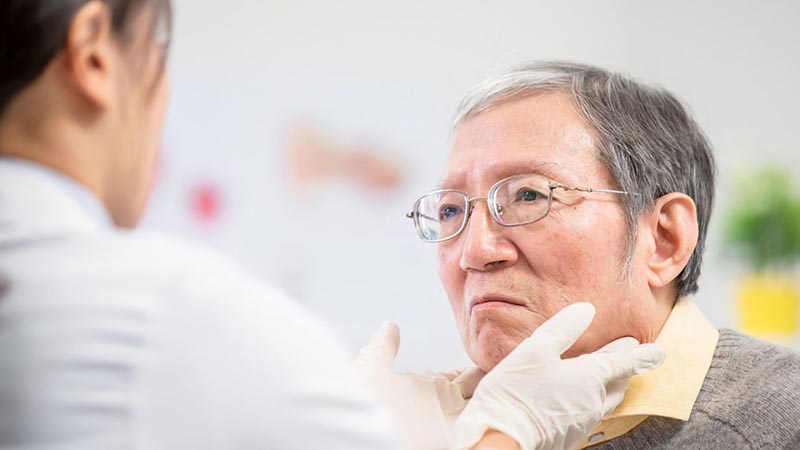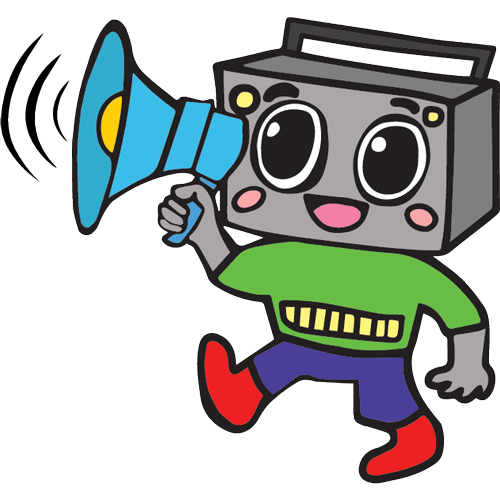How Speech Therapy Is Helping COVID-19 Patients Recover

When you think of COVID-19’s impact, respiratory issues, a loss of smell or taste, and other problems in the brain or heart may first come to mind. However, you may not have known how much the coronavirus can negatively impact your speech and ability to swallow, the latter which is known as dysphagia.
We spoke with Open Lines® founder and executive director, Dr. Jessica Galgano, to learn more about why certain post-COVID-19 patients are experiencing these challenges. Dr. Galgano has personal experience using speech, respiratory-voice, and swallowing therapy to help patients who survived COVID-19 but have lasting or chronic difficulties following the acute infection.
COVID’s Impact on Voice and Dysphagia
The respiratory system is involved with speech and swallowing functions. When it becomes compromised by an illness or infection, such as COVID-19, you may have trouble breathing when speaking, reduced vocal loudness or difficulty swallowing.
Difficulties with thinking and organizing your thoughts to speak can also become challenging. In addition, you can also develop subsequent physiological damage, such as muscle tension when speaking and overexertion of muscles as you strain to speak louder and more clearly.
“When it comes to swallowing safety, you largely rely on your respiratory muscle strength to drive your cough reflex and expel particulates from your trachea and lungs,” Dr. Galgano said. “Without this protective mechanism, you are at high risk for developing serious medical complications, such as infections and aspiration pneumonia.”
ARDS (acute respiratory distress syndrome) is a common symptom of COVID-19 that leads to widespread lung inflammation. Some of these issues become compounded if a person with COVID-19 requires intubation, a procedure in which doctors place a breathing tube in your throat to aid respiratory function and help you breathe. The tube goes just below the level of the vocal cords into the trachea or windpipe. Damage, such as tissue scarring and swelling, can occur to the larynx (voice box) and trachea, ultimately impacting your ability to speak and swallow. Your body needs these parts to produce sound and help you swallow.
In the United States, 19% of COVID-19 patients end up hospitalized, with 6% admitted to the intensive care unit, according to the Centers for Disease Control and Prevention. Many of these patients end up on ventilator machines to help them breathe or do the breathing for them.
However, as with anything, there are side effects the longer you stay on the machine with a tube in your throat.
“Prolonged ventilator use can result in complications, such as ventilator-associated pneumonia (VAP), ventilator-associated lung injury (VALI), and increased risk of upper respiratory infections,” Dr. Galgano explained.
Undergoing a tracheostomy, a surgical procedure in which doctors make an incision on the front of the neck and open a direct airway through an incision in the trachea (windpipe) to help you breathe, can also create voice and swallowing problems.
Treating Patients with Speech and Swallowing Issues
Treatment for these issues increases your well-being and is vital to your protection from additional health complications. For example, swallowing difficulties or a loss of taste can lead to malnutrition and/or dehydration. Without the sensory input of taste, you may find yourself eating meals that lack nutritional value or develop apathy towards eating. You may also have difficulties swallowing a variety of textures safely, such as solids or liquids, and may limit meals or avoid certain foods to reduce complications.
You can also be at increased risk of penetration (when material enters the airway but does not go below the level of the vocal cords, usually resulting in a throat clear) or aspiration (when the material passes through the level of the vocal cords into the trachea, usually resulting in coughing) when you have difficulty swallowing.
These two issues can increase the risk of developing lung infections, such as aspiration pneumonia, a serious respiratory complication that occurs when food or liquids enter the lungs, leading to infection. This often requires further hospitalization.
Speech-language pathologists (SLP) play a vital role in rehabbing people with COVID-19 who have a lasting voice and swallowing symptoms. Depending on the diagnosis, an SLP will incorporate a variety of techniques derived from core principles of rehabilitation and motor-planning/execution that will help create changes in your brain for long-lasting results. This could include a variety of drill-based and functional activities to improve your voice or ability to swallow.
“Individuals who have survived COVID-19 may benefit from a variety of evidence-based voice and swallowing exercises and programs. This is something your SLP will determine at the time of the assessment,” Dr. Galgano said. “Determining the correct treatment target and mode of treatment is essential when planning therapy and to optimize outcomes so you can meet your goals as quickly as possible.
“Some individuals may benefit from resonant based or semi-occluded vocal tract exercises voice therapy techniques to reduce muscle tension, increase forward resonance and projection of voice, while others may benefit from a more intensive exercise protocol to strengthen their voice and improve voice and speech clarity, such as LSVT LOUD.”
If muscle weakness is causing swallowing problems, one may also benefit from specific oral-motor or swallow strengthening exercises.
“People with swallowing disorders may benefit from techniques or modifications to help you safely swallow. Strategies can include basic aspiration precautions, such as sitting upright when eating, taking smaller sips, reducing bite-size, tucking the chin when swallowing, or eating more slowly,” Dr. Galgano said. “You may also need exercises to strengthen different aspects of swallowing.”
Examples of these exercises include the Masako maneuver tongue hold where you slightly stick out your tongue and bite down with your front teeth while swallowing saliva. This helps increase tongue strength. You can also perform effortful pitch glides, starting with your lowest note up to your highest falsetto note, to help your voice box lift up in your throat.
A Timeline for Recovery
How long it takes to recover from voice or swallowing problems due to COVID-19 will vary depending on the severity of the underlying issue, as well as motivation and intensity of practice.
“Typically, to optimize motor learning, we recommend higher-intensity intervention. However, this is determined at the time of the initial assessment or evaluation,” Dr. Galgano said. “Your SLP will also design a home exercise program for you to complete during your course of treatment. A treatment program with an appropriate intensity that addresses any anxiety on the issue and includes functional exercises and goals will shorten the recovery timeline.”
Dr. Galgano also stated it is important for SLPs to be sensitive to the emotional and psychological effects of their patient’s recovery. Each case is different, and a person may feel overwhelmed, frustrated, and discouraged by what has happened.
“As clinicians, we need to acknowledge our patient’s experience, provide people with education and knowledge, offer hope and encouragement about setbacks that can be expected but are usually temporary, and adjust therapeutic plans to support clients and family members in regaining and retraining skills to communicate and eat again,” she said.
Final Takeaways on COVID-19
Since April 2020, Dr. Galgano has been a panelist and lecturer for national and international webinars with the National Center for Voice and Speech and LSVT Global, Inc. that covered COVID-19 topics for SLPs, physical therapists, and occupational therapists, as well as problems within speech, voice, and swallowing for post-COVID-19 patients.
After participating in these discussions, Dr. Galgano came away with several notable points. For starters, it was a reminder to be safe, wear a mask, wash your hands frequently, and stay in well-ventilated areas.
“COVID-19 has the potential to wreak havoc on your ability to think, breathe, vocalize, speak, and swallow — in both acute and chronic stages,” she said.
As it relates to SLPs treating COVID-19 patients, Dr. Galgano also stated clinicians have a responsibility to come up with a plan that is evidence-based and targets each person’s specific goals.
“Another important takeaway from these seminars that applies to specialists all over the world is that effective therapy considers the whole individual in all aspects of the therapeutic process and keeps lines of communication open,” she said. “As clinicians who deliver online therapy in these unprecedented times, we need to strive for high quality, best practices and provide top care for our patients during this time of need.”
At Open Lines®, specialists treat voice and swallowing disorders caused by many illnesses or injuries — not just COVID-19. Contact the team today by phone at (212) 430-6800, by email at [email protected], or through our contact form to learn more about our services. If you are ready to take the next steps with adult speech therapy services, we would be happy to help. Click here to request an appointment with us.
If you’re struggling with communication difficulties, it’s time to turn to Open Lines®. Contact us via phone (212-430-6800), email [email protected], or by filling out our convenient contact form. Improve your communication skills and unlock your potential with Open Lines® Speech and Communication in New York today!
Get in Touch With Open Lines®












